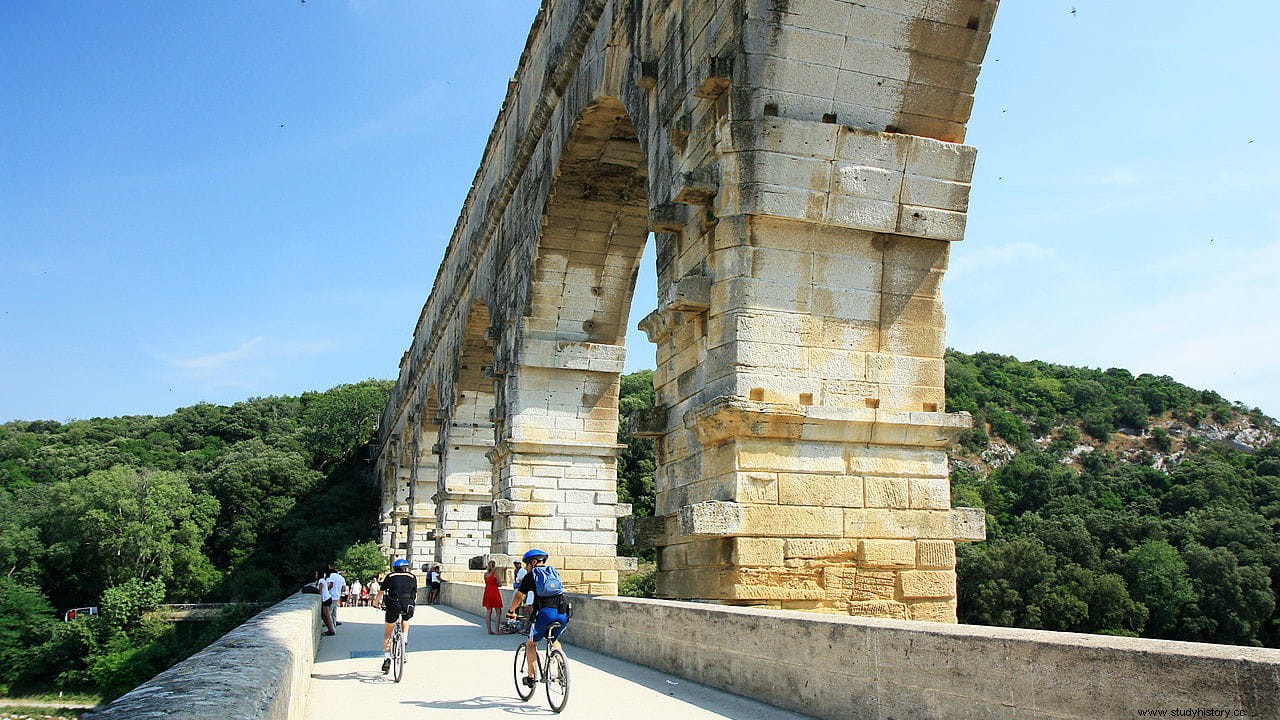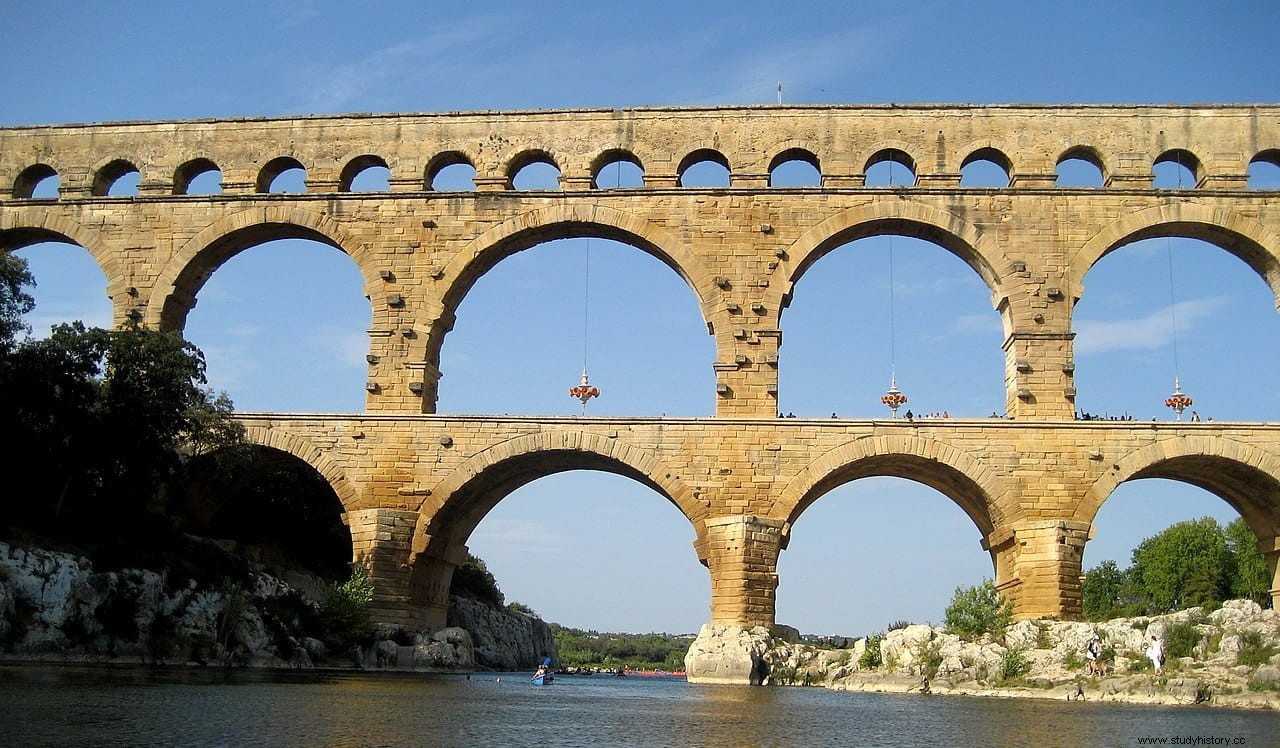During the first half of the 1st century AD. the Nimes aqueduct, about 50 kilometers long, was built to carry water from the springs of the Fontaine d'Eure in Uzes to the Roman colony of Nemausus.
Although the distance in a straight line is only 20 kilometers, the route of the aqueduct follows a winding route to avoid the mountainous foothills of the Garrigas de Nimes.
Near the current city of Vers-Pont-du-Gard, the aqueduct was supposed to cross the course of the Gardon river, which was achieved by building a bridge with three levels of arches with a total height of 48.8 meters, which makes it the tallest of the Roman aqueducts. It is called the Pont du Gard.

About 35 kilometers of the total route of the aqueduct was built underground, excavating a trench in which a stone channel was raised covered by an arched roof of stone slabs, then covered with earth. In some sections the channel crosses tunnels excavated in the rock.
In ancient times, the aqueduct transported some 40,000 cubic meters of water daily to the fountains, baths and houses of the citizens of Nimes, with an astonishing drop of only 12.6 meters between the origin and the end of the structure.

In fact, the Gard Bridge has a difference in level of just 2.5 centimeters between the 274 meters of its ends, which demonstrates the great precision achieved by Roman engineers. And in the remaining 25 kilometers to Nimes there is only a 6 meter descent. The water took 27 hours to travel the entire route of the aqueduct.
After the fall of the Roman Empire, the bridge was maintained thanks to its secondary function as a toll bridge to cross the river. Bishops and local lords took turns operating and maintaining it until the end of the 20th century when the state took charge of its conservation, definitively eliminating traffic.
The width of the Pont du Gard is 9 meters at the bottom, narrowing to 3 meters at the top. Also, the three levels have different numbers of arches. Like other aqueducts, it was built without mortar, the stone blocks being cut precisely so that they fit snugly against each other by friction alone.

However, in later aqueducts such as the one in Segovia, Roman engineers managed to bridge approximately the same distance using fewer arches, optimizing the volume and cost of construction.
The original spring still exists, but the pipeline has been replaced by a pumping station.
